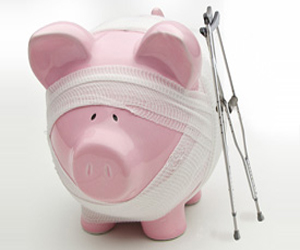Send this article to a friend:
February
21
2022

Send this article to a friend: February |
 |
It's Another Housing Bubble And The Fed Is Holding The Pin
That remains to be seen. Two things are for certain. The is a massive housing bubble. And the Fed is holding the pin. The bubble in the housing market today is bigger than it was before 2008. And there is a bubble for the same reason. The central bank has held interest rates artificially low for nearly two years. On top of that, it stuck its big fat thumb on the mortgage market with its purchase of mortgage-backed securities. With those loans off their books, banks could lend more. The result — skyrocketing home prices In the same way, quantitative easing creates artificial demand for Treasuries, thereby keeping rates low and facilitating more federal government borrowing and spending, it also keeps mortgage rates artificially low and juices the housing market. As economist Alex Pollock put it in an article published by the Mises Wire earlier this year, the Fed “continues to be the price-setting marginal buyer or Big Bid in the mortgage market, expanding its mortgage portfolio with one hand, and printing money with the other.” In 2006, the Fed owned zero mortgages. Today, The central bank holds about $2.6 trillion in mortgage-backed securities on its balance sheet. According to Pollock, about 24% of all outstanding residential mortgages in the US reside in the central bank. That makes the Fed, by far, the largest savings and loan institution in the world. The result was entirely predictable According to Fed data, the average sales price of a home in the fourth quarter of 2021 was $477,900. That compares to $403,900 in Q4 2020 and $384,600 in the fourth quarter of 2019. In other words, the average sale price increased by $93,300 in just two years. That is by far the biggest increase ever recorded in a 24-month period. Here’s a little more data to chew on. The 12-month home sales price increases in the first three quarters of 2021 were all above 17%. That’s the biggest increase ever recorded over any three-quarter period since at least 1963. That’s the earliest data available. Justin Haskins summed up the situation in an article published by The Federalist.
So, we have a massive housing bubble — even bigger than the one that popped in 2007 and led to the 2008 financial crisis. And what always happens to bubbles? They pop. And the Fed has the pin in its hand. It’s about to raise interest rates. Mortgage rates will go up right along with them. And it’s already tapering its purchase of mortgage-backed securities. Haskins provides a comparison between the runup to 2008 and today.
That’s not to say it will precipitate another 2008-style crisis. The dynamics in the subprime market are different this time around. But a collapsing housing market will ripple through the economy and it’s hard to say exactly how it will play out. Regardless, this is a big problem for the Fed. We have been saying that the Fed can’t do what it’s saying it will do to fight inflation, and this is yet another reason. If it follows through with rate hikes, and if it stops buying mortgage-backed securities and then starts selling them into the market, mortgage rates are going to skyrocket. Unaffordable homes will become more unaffordable. The housing bubble will pop. Again. It may not take much of a pinprick to pop the bubble. Even the 1 or 2% rate hike the Fed is talking about could do the trick. This is yet another reason Peter Schiff says the Fed is “running out of minutes.”
|
Send this article to a friend:
 |
 |
 |